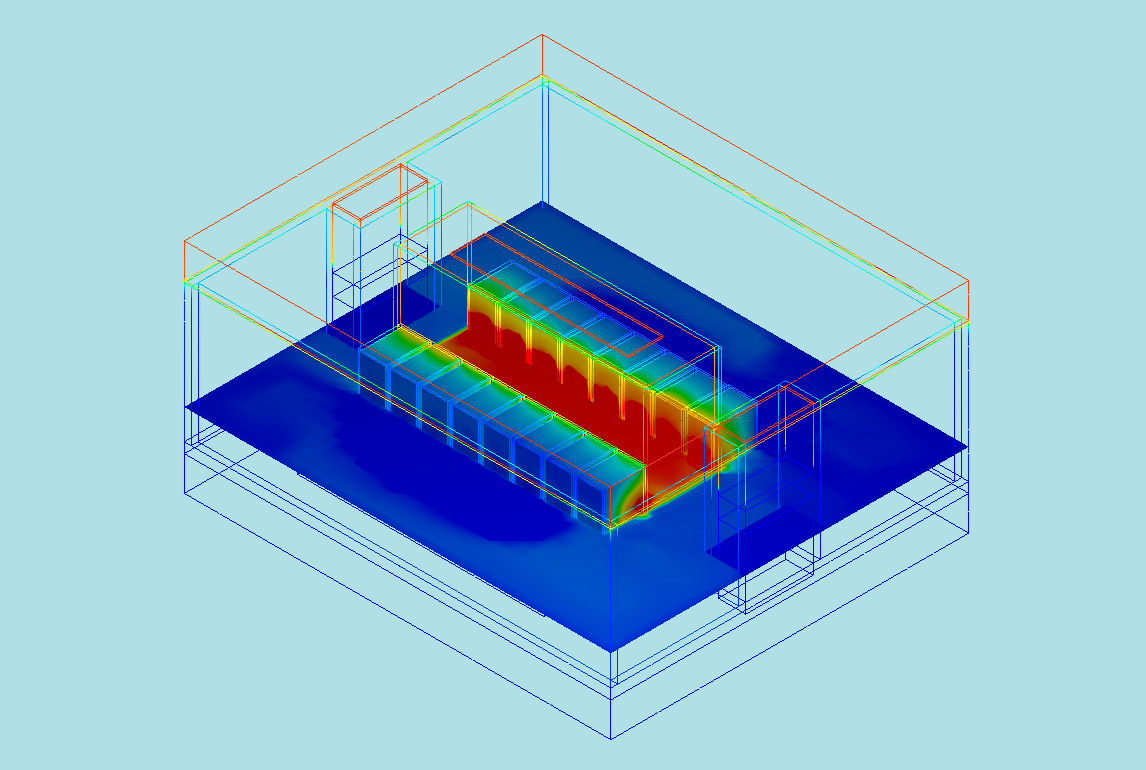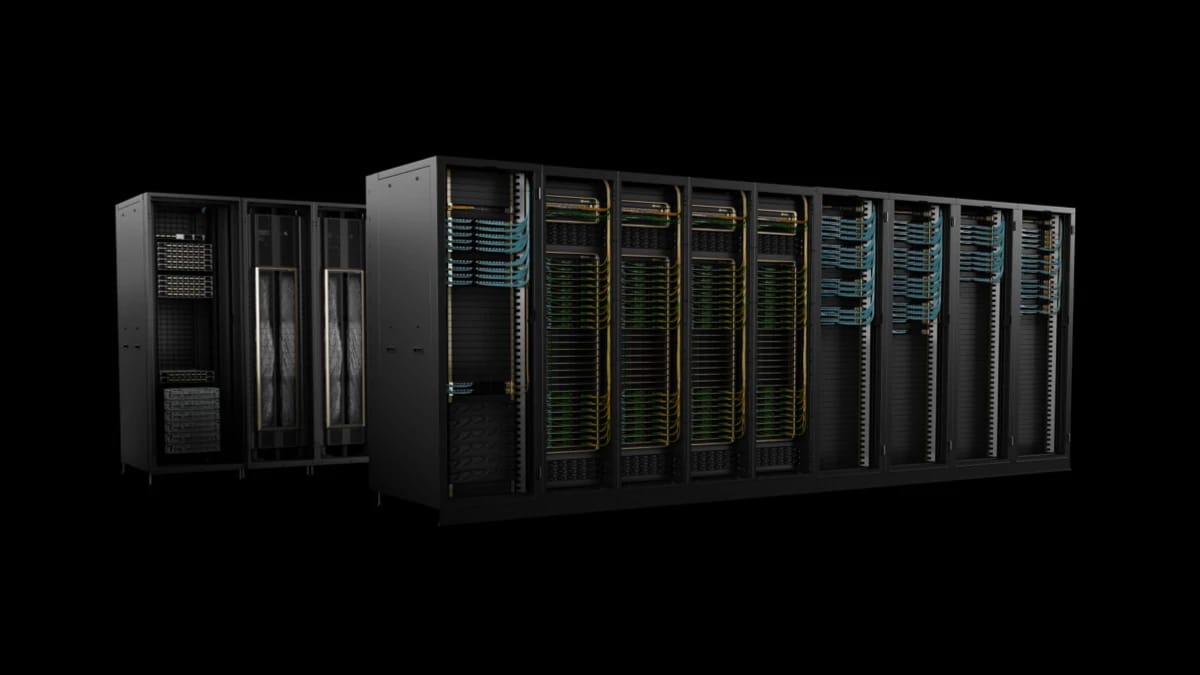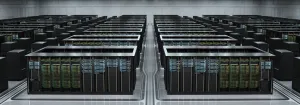AI is reshaping industries from healthcare to finance, unlocking what NVIDIA CEO Jensen Huang describes as $100 trillion in economic opportunities. Scaling AI, however, demands more than fancy algorithms. It requires infrastructure capable of processing massive datasets and managing increasingly complex workloads. AI factories are emerging as the answer for building, training, and deploying these powerful AI models transforming modern industries.
Once limited to tech giants like Google and OpenAI, AI factories are now within reach of a wider range of businesses, from startups to established enterprises. These comprehensive solutions give organizations the ability to fast-track AI projects, improve efficiency, and remain competitive in a rapidly evolving market.
What is an AI Factory?
AI factories are specialized facilities designed to support every stage of AI development and deployment. Equipped with high-performance computing, advanced cooling systems, and efficient workflows, these factories provide a controlled environment for building, training, and applying AI models. Their infrastructure ensures smooth operations and reliable performance while maintaining optimal thermal efficiency.
With powerful GPU clusters, advanced liquid cooling, and scalable server infrastructure, AI factories enable organizations to handle large-scale AI operations with precision and reliability. Effective cooling solutions are crucial to keeping high-performance hardware running efficiently, reducing heat, and maximizing uptime—making AI factories an essential part of many modern AI strategies. From data processing and model training to deployment, these facilities optimize the entire lifecycle of AI production.
Data Preparation
The first step in any AI workflow is data preparation, where raw data is transformed into a format suitable for model training. This process involves cleaning, organizing, and labeling data to ensure it is usable and relevant. Effective data preparation is critical for the accuracy and success of AI models, as the quality of the input data directly impacts outcomes. AI factories automate many of these tasks, significantly reducing the time and effort required for manual processing and enabling organizations to work with vast datasets more efficiently.
Model Training
Once data is prepared, the next phase involves training AI models using powerful hardware, typically GPUs or advanced accelerators. This stage is computationally intensive, requiring systems that can handle complex algorithms and massive amounts of data simultaneously. AI factories leverage high-performance computing resources to optimize training times and improve model accuracy. The ability to train sophisticated models quickly and efficiently allows businesses to innovate faster and respond to market demands effectively.
Fine-Tuning
Once a model is trained, the next step is fine-tuning it for specific tasks or applications. Fine-tuning involves taking a pre-trained model and optimizing it on a smaller, task-specific dataset to improve its performance in a particular domain. This step significantly reduces the time and computational resources required compared to training a model from scratch. In AI factories, fine-tuning is streamlined through the use of advanced hardware and automated workflows, enabling businesses to adapt their models to niche applications like medical diagnostics, financial forecasting, or personalized recommendations. Fine-tuning ensures that AI systems are highly relevant to their intended use cases.
Deployment and Inference
After a model has been fine-tuned, it must be deployed to real-world environments where it can generate insights or perform tasks. Inference refers to the process of applying the trained model to new data inputs to produce results, such as making predictions or recommendations. AI factories streamline deployment and inference by ensuring that models operate with minimal latency and maximum reliability. This capability is essential for applications requiring real-time processing, such as autonomous vehicles, fraud detection, or personalized recommendations.
Performance Monitoring
AI factories also incorporate systems for continuous performance monitoring, which track the operation of AI models and underlying infrastructure. Monitoring tools provide real-time insights into model accuracy, system efficiency, and potential issues, enabling businesses to make adjustments as needed. This proactive approach helps maintain uptime and ensures that AI systems deliver consistent value over time. By integrating monitoring into the workflow, AI factories enable organizations to optimize resources and achieve long-term success.
The Role of AI Factories for Startups and Enterprises
AI factories are transforming how businesses of all sizes integrate AI into their operations. For startups, these systems provide a fast track to deploying AI solutions without the heavy upfront investment in infrastructure. By leveraging the comprehensive capabilities of AI factories, startups can focus their limited resources on research, product development, and market entry rather than on building and maintaining complex systems. As they secure funding and grow, startups can scale their AI factories incrementally, adding computing power, advanced hardware, and automation tools to match their expanding needs. This flexibility ensures that startups can adapt their AI infrastructure to evolving goals, making it a foundational tool for sustainable growth.
For established enterprises, AI factories offer a pathway to scale out existing capabilities. Large organizations use these systems to optimize processes, accelerate product development, and deploy AI-driven solutions across multiple divisions or geographic regions. The standardized workflows of AI factories enable enterprises to streamline their operations while remaining adaptable for specialized applications like predictive analytics or personalized customer experiences. By scaling out their AI capabilities, enterprises can unlock opportunities for greater efficiency, enhanced innovation, and broader operational impact.
Despite their advantages, scaling AI factories presents challenges for businesses at every stage. Companies must carefully select infrastructure that aligns with their specific goals and ensures a balance between performance and cost. Reliability is another critical factor, as high-performance workloads demand systems capable of minimizing downtime and maintaining consistent operations. Additionally, integrating workflows across hardware, software, and operational processes can be complex and requires careful planning.
AI factories empower businesses to grow and innovate at their own pace while addressing these challenges with strategic planning and expert guidance. Whether for a startup navigating its initial steps into AI or an enterprise looking to expand its AI-driven initiatives, AI factories provide a scalable, adaptable foundation. By working with experienced partners like AMAX, businesses can ensure their AI factories are optimized for success, enabling them to harness the full potential of AI.
Addressing Challenges in AI Factories
Despite their benefits, AI factories present challenges that must be addressed to achieve efficient operations. Power consumption, space constraints, and cooling requirements are among the most significant hurdles.

Managing Power Demands
Training large-scale AI models requires considerable energy. High-performance systems consume substantial amounts of power, which can strain resources and increase costs. NVIDIA GB200 NVL 72 systems, the main building block of AI Factoires are engineered to optimize energy use without sacrificing performance. AI-driven energy management systems and renewable energy sources such as solar and wind power can further reduce dependency on traditional grids.
Overcoming Space Constraints
As workloads grow, the demand for additional hardware often exceeds the capacity of existing facilities. High-density hardware designs allow organizations to fit more computing power into smaller spaces, while modular data centers provide a flexible option for expanding capacity without significant construction projects.
Cooling High-Performance Systems
Cooling is one of the most challenging aspects of running an AI factory. Systems like NVIDIA GB200 NVL 72 and NVIDIA DGX™ GB200, require liquid cooling to operate effectively. AMAX offers solutions like the LiquidMax® ALC-B4872, which incorporates a liquid-to-air cooling system. This design efficiently transfers heat from high-performance components to a sidecar cooling unit for dissipation, ensuring systems run smoothly while minimizing energy consumption. Other options, such as immersion cooling and AI-driven cooling systems, provide additional ways to manage the thermal demands of advanced hardware.
NVIDIA GB200 NVL 72 as a Solution for AI Factories
The NVIDIA GB200 NVL 72 and DGX GB200 systems are engineered to meet the extremely high demands of modern AI factories. AMAX offers two distinct configurations to accommodate various operational needs: the NVIDIA DGX SuperPOD™ with DGX GB200 systems and the LiquidMax® ALC-B4872 GB200 NVL72 AI POD, based on the NVIDIA MGX rack architecture. Each configuration provides unique advantages, enabling organizations to select the option that best aligns with their infrastructure and performance requirements.
NVIDIA DGX SuperPOD™ with DGX GB200 Systems

The NVIDIA DGX SuperPOD™ with DGX GB200 systems is a fully integrated solution designed for enterprises requiring exceptional scalability and reliability for large-scale AI workloads. Key features include:
- Extreme Scalability: Supports deployment of up to tens of thousands of NVIDIA Grace Blackwell Superchips, facilitating efficient training and inference for multi-trillion parameter models.
- High Performance: Each DGX GB200 system comprises 36 NVIDIA Grace CPUs and 72 NVIDIA Blackwell GPUs, delivering up to 1.4 exaFLOPS of AI performance, 30 terabytes of fast memory, and 130 terabytes per second of bidirectional GPU bandwidth.
- Full-Stack Resilience: Incorporates intelligent infrastructure with automatic failover and robust checkpoint mechanisms to ensure continuous operation and data integrity.
- Comprehensive Software Integration: Includes NVIDIA Mission Control™ for orchestration and cluster management, along with NVIDIA AI Enterprise for streamlined AI development and deployment.
LiquidMax® ALC-B4872 GB200 NVL72 AI POD

The LiquidMax® ALC-B4872 GB200 NVL72 AI POD, based on the NVIDIA MGX architecture, offers a flexible and efficient solution for organizations seeking high-performance AI capabilities without extensive data center modifications. Notable features include:
- Efficient Liquid-to-Air Cooling: Utilizes a sidecar liquid-to-air cooling system that circulates liquid coolant to absorb heat from high-performance components within the rack. The heat is then transferred to the air via a sidecar cooling unit, which expels the hot air into the Computer Room Air Conditioner (CRAC) for final dissipation. This design eliminates the need for facility liquid integration, allowing for easy implementation into existing data centers without significant infrastructure changes.
- High Performance and Energy Efficiency: Delivers up to 30 times the performance for large language model (LLM) inference workloads compared to NVIDIA H100 Tensor Core GPUs, while reducing energy consumption and costs by up to 25 times.
- Scalable Architecture: Features a scale-out, single-node NVIDIA MGX architecture, enabling a variety of system designs and networking options to integrate into existing data center infrastructure.
By offering these two configurations, NVIDIA and AMAX empower businesses to enhance their AI capabilities with solutions tailored to their specific needs, ensuring both high performance and quick deployment into existing infrastructures.
How AMAX Supports AI Factory Deployment
Developing an AI factory is a complex process that demands careful planning, technical expertise, and a deep understanding of infrastructure requirements. It involves more than simply acquiring the latest hardware; organizations must consider how to integrate, configure, and scale their systems to meet operational goals effectively. This is where AMAX brings value, offering end-to-end support and tailored solutions based on over 40 years of experience in high-performance computing.
AMAX specializes in building AI factories that deliver exceptional performance and reliability. From designing GPU clusters optimized for cutting-edge AI workloads to deploying advanced cooling technologies like liquid-to-air systems, AMAX ensures every component is configured for maximum efficiency. By addressing key challenges such as power demands, space constraints, and thermal management, AMAX enables businesses to establish AI factories that are not only high-performing but also scalable for future growth.
Whether it is helping startups lay the groundwork for their first AI solutions or assisting enterprises in scaling operations to support global initiatives, AMAX adapts its approach to align with each client’s unique requirements. By partnering with AMAX, organizations can access the expertise needed to navigate the complexities of AI infrastructure, ensuring that their AI factories are built to support long-term success.
AMAX’s commitment extends beyond initial deployment. With a comprehensive range of services, including on-site installation, system validation, and ongoing maintenance, AMAX ensures that AI factories continue to operate efficiently as business needs evolve. By providing a reliable foundation, AMAX empowers businesses to focus on innovation and achieving their strategic goals.
The Future of AI Factories in Business
AI factories are emerging as a critical tool for industries adopting AI to drive progress. While not every business will require an AI factory, many sectors, including healthcare, finance, and manufacturing, are already exploring these systems to handle the increasing complexity of AI workloads. As AI continues to shape the next wave of technological advancements, AI factories provide the infrastructure needed to scale operations, enable real-time insights, and support the development of advanced AI solutions.
Solutions like NVIDIA GB200 NVL 72 and NVIDIA DGX GB200 systems, combined with the expertise of AMAX, give businesses the tools to build and deploy AI infrastructure that meets their specific goals. From large-scale systems for generative AI to flexible configurations designed to fit into existing operations, AI factories empower organizations to take advantage of the possibilities AI offers while ensuring efficiency and scalability.
As AI becomes an essential part of the technology roadmap for many industries, companies investing in AI factories today will be better equipped to stay ahead. For businesses ready to take the next step, partnering with AMAX ensures a clear and reliable path to building systems that support both current needs and future ambitions.

